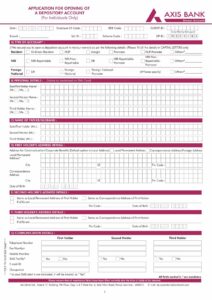Utilizing a standardized framework for managing modifications offers numerous advantages. It minimizes errors and inconsistencies, improves collaboration among stakeholders, streamlines workflows, and enhances overall efficiency. A systematic approach to change control enables organizations to maintain better control over projects and products, reduce risks, and ensure higher quality outcomes. Furthermore, a well-defined process facilitates informed decision-making, enabling teams to prioritize changes effectively and allocate resources appropriately.
Understanding the core components and functionalities of a robust system for managing modifications is essential for successful implementation and utilization. This discussion will explore the key elements of such a system, including request submission, review and approval workflows, implementation tracking, and reporting capabilities. It will also delve into best practices for leveraging these systems to optimize change management processes and achieve desired project outcomes.
Key Components of a Change Request System
Effective change management relies on a structured system with well-defined components. These components ensure that all modifications are handled consistently, transparently, and efficiently.
1. Unique Identifier: Each request requires a unique identifier for tracking and referencing throughout its lifecycle. This could be a sequential number or a combination of alphanumeric characters.
2. Requestor Information: Details about the individual or team initiating the change are essential for communication and clarification. This typically includes name, department, and contact information.
3. Description of Change: A clear and concise explanation of the proposed modification is crucial. This section should detail the nature of the change, its purpose, and the desired outcome.
4. Justification: The rationale behind the change request should be clearly articulated. This helps stakeholders understand the necessity and potential benefits of the modification.
5. Impact Assessment: Potential effects of the change on various aspects of the project, product, or service should be evaluated. This assessment helps in understanding risks and dependencies.
6. Priority Level: Assigning a priority level helps in prioritizing changes based on urgency and impact. This allows for efficient allocation of resources and timely implementation.
7. Approval Workflow: A defined approval process ensures that changes are reviewed and authorized by relevant stakeholders. This often involves multiple levels of approval based on the nature and impact of the change.
8. Implementation Plan: This outlines the steps required to implement the change, including timelines, assigned responsibilities, and resource allocation.
These core elements provide a robust foundation for managing changes systematically. A well-designed system incorporates these components to ensure clarity, traceability, and accountability throughout the change management process, leading to improved project outcomes and reduced risks.
How to Create a Change Request Tracker Template
Creating a standardized template ensures consistency and efficiency in managing change requests. A well-structured template facilitates clear communication, simplifies tracking, and supports informed decision-making throughout the change management process.
1. Define the Scope: Determine the types of changes the template will accommodate. Consider project-specific needs and organizational requirements to ensure comprehensive coverage.
2. Essential Fields: Incorporate key data points for comprehensive tracking. These fields should capture information such as request date, requestor, description of change, justification, impacted areas, priority level, and assigned personnel.
3. Approval Workflow Integration: Designate spaces for approvals and their respective statuses. This ensures clear accountability and facilitates tracking the progress of the request through the approval process.
4. Implementation Tracking: Include sections to document implementation details, including planned start and end dates, assigned resources, and actual completion dates. This allows for monitoring progress and identifying potential delays.
5. Version Control: Implement version control to track revisions and maintain an audit trail of changes made to the template itself. This ensures clarity and facilitates historical analysis.
6. Testing and Refinement: Pilot test the template with a small group to identify potential areas for improvement. Gather feedback and refine the template to optimize its usability and effectiveness within the organization.
7. Choose the Right Tool: Select a suitable platform for implementing the template. This could range from a simple spreadsheet to dedicated change management software, depending on organizational needs and complexity.
A robust, well-designed template provides a structured framework for managing change requests, ultimately improving project outcomes and reducing risks by streamlining the change process and promoting effective communication amongst stakeholders.
Effective management of modifications relies on structured systems, and standardized templates provide the foundation for such systems. These templates facilitate clear communication, streamlined workflows, and improved traceability throughout the entire lifecycle of a change request. Key components, such as unique identifiers, detailed descriptions, impact assessments, and defined approval workflows, ensure that all modifications are handled consistently and transparently. Selecting the right tools and refining templates based on organizational needs are crucial steps in optimizing the change management process.
Implementing robust change management practices, supported by well-designed templates, offers significant benefits, including reduced risks, improved project outcomes, and enhanced organizational agility. The ability to adapt to change effectively is crucial for success in today’s dynamic environment, and organizations that prioritize structured change management processes are better positioned to navigate evolving challenges and capitalize on emerging opportunities.

